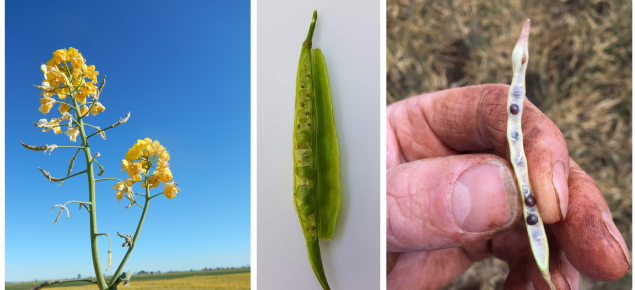Period of risk and plant susceptibility
Canola and pulses are most susceptible to frost damage around early flowering to late pod-growth and early seed-fill.
Buds, flowers, pods, seeds and stems can all be affected by frost. Frost during this reproductive stage can result in flower abortion, poor pod set and impaired pod filling, leading to a drastic reduction in yield and quality. The reproductive developmental stages occur simultaneously in pulses and canola and as a result can all be affected by a single frost event.
To identify frost damage
- Inspect canola and pulse crops between bud formation and pod fill, if night air temperature falls below 2°C and there is likely to have been a frost.
- Check low-lying, light-coloured soil types and known frost-prone areas first. Then check other areas. Walk a machinery width into the paddock as crop on outside edge may have less damage.
- Frost damage can occur randomly resulting in high variability within paddocks and even on individual plants.
- Monitor pod development and seed fill following a frost event by tagging reference plants and checking these a few days later for signs of senescence (death) or continued development.
About the guide
The Frost Identification Guide for Canola and Pulses was produced by the Department of Primary Industries and Regional Development, with support from the Grains Research and Development Corporation National Frost Initiative reaseachers.
The guide includes details on when to inspect crops, how to identify frost damage at the different stages of plant development, an overview of biotic and abiotic stresses that may have caused similar damage symptoms and a list of weblinks to more information.
The guide can be downloaded from this page (see link in the right menu) or alternatively free copies are available from department offices and field days.
Download the Frost Identification Guide



